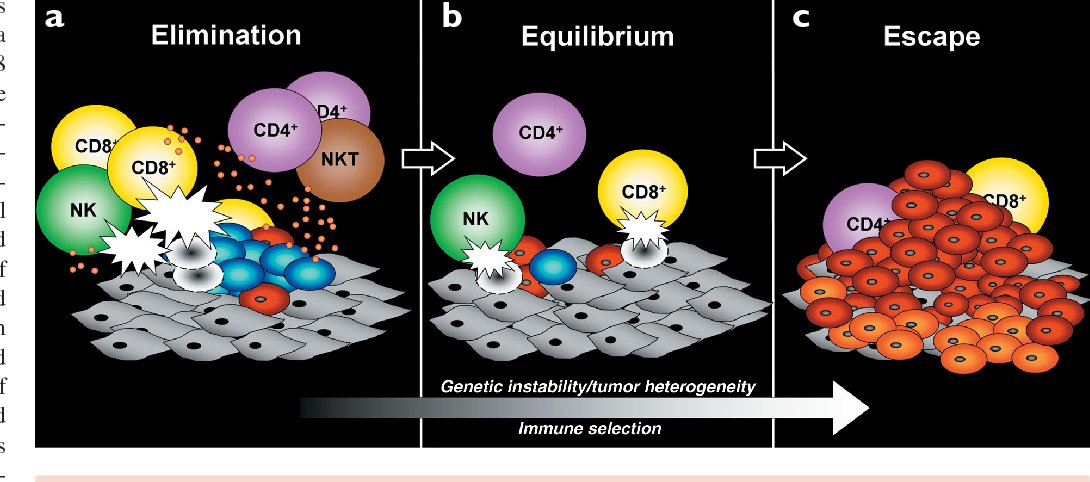
#Oncogenetics Part 1:
This will be an introduction with the biology of oncology. Then I plan to get into the genetics. I will then come back and do a walkthrough example of how genetics drive the development of a tumor.
This will be an introduction with the biology of oncology. Then I plan to get into the genetics. I will then come back and do a walkthrough example of how genetics drive the development of a tumor.
1/ Cancer doesn't start with just 1 mutation. It is an accumulation of mutations over time. It starts with just one cell that develops a mutation which gives it an advantage to grow.
2/ That cell replicates faster than other cells around it or it replicates when its not supposed to. As it continues to divide, it will eventually gain more beneficial mutations which move it down the path toward cancer. 

3/ The tissue around the these new cancer cells will initially be hostile to the tumor cells. It will have to develop mutations that allow it to evade the immune system. 

4/ The mutations that drive the growth and development of a cancer cell are known as the hallmarks of cancer. 

5/ They are specific attributes the cells gain that allows them to survive and thrive in a system that is normally designed to destroy them. These attributes come from mutations in the DNA of the cells which alter their function.
6/ Some of these mutations are inherited at birth. People with these kinds of mutations have a higher risk for specific cancers based on the type of mutation they might have. Some people are unfortunate enough to be born with enough genetic mutations to have cancer.
7/ Other mutations to the DNA come from environmental exposure to carcinogens like smoking or UV light. Carcinogens are chemicals or radiation that cause damage to the DNA which can cause mutations.
8/ On average, it takes about 5 to 6 key mutations to turn a healthy cell into a cancerous one. Cancer begins when the delicate balance of the cell growth cycle is thrown off.
9/ Cancer is the uncontrolled growth of cells. It might start with just one cell, but eventually it gains more mutations with each generation of cancer cells. It grows into a hyperplasia which just means a abnormal growth of cells.
10/ Eventually, it will gain more mutations that allow it cancerous attributes like invasion of surrounding tissues and metastasis.
11/ Blood cancers begin with the cells that make up the blood system like red blood cells, platelet or even immune cells themselves. They typically only have a few clear antigens like CD19, C20 and CD22 which are on B cells related blood cancers. 

12/ It makes them easy targets for therapies as these antigens are only on the B cells that drive these cancers. Its easy to wipe them out without harming any of the healthy tissues.
13/ These blood cancer tend to be in the blood circulation which makes them easy to find and target with therapies.
14/ Sold tumors tend to hide in the tissues when many therapies do not normally go. This brings with it new challenges like trafficking the therapy to the tissue of the tumor.
15/ There is also a battle going on in solid tumors between the cancer cells and the immune cells. Many solid tumors only survive by developing mutations that allow it to thwart the immune defenses. 

16/ This brings with it whole new challenges around the Tumor Microenvironment (TME). Many therapies will fall prey to this immune suppressive environment created by the tumor.
17/ Another major challenge to solid tumors is their level of mutations. Where blood cancers have few mutations that drive them, solid tumors can have dozens or even hundreds of mutations. 

18/ That gives them many antigens which make them very difficult to target. One antigen might only clear a small part of the tumor. Another antigen might be shared with other healthy cells and cause toxic side effects.
19/ Many solid tumors will develop mutations that evade immune detection. Many tumors will learn to reprogram the immune response around it by secreting signals to change the way these immune cells behave.
20/ It will create T regulatory cells that suppress the immune response. It can switch the behavior of Macrophages from one of cell killing to one of cell repair. This can make solid tumors very hard to detect and very had to treat.
21/ Now that we understand the basic of the biology of cancer, we will next dig into the 3 types of genes that can contribute the the altered behavior of cancer cells.
• • •
Missing some Tweet in this thread? You can try to
force a refresh






